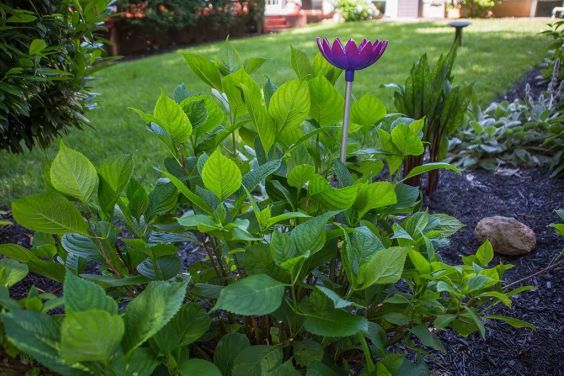Deep root irrigators are tools that help the water reach the plant roots directly. These innovative watering tools ensure that your plants receive the moisture that they need and also help you save water.
Types of Deep Root Irrigators
Root irrigator devices contain a stem that helps water reach the roots. There are different kinds of root irrigator designs. The pipe that takes the water to the roots can be of different dimensions. Some root irrigators can resemble industrial pipes and can be thicker in diameter. Others can have tiny stem-like pipes. For some designs you will need to attach the devices to a hose while in others you will need to water the plants manually.

Using Deep Root Irrigators
It is very easy to use a deep root irrigator in just about any kind of garden. You can place multiple lightweight devices in a garden bed or place one inside your indoor planters. You can spread them throughout your garden to water your plants properly.
Simple root irrigators with flower basin designs –
If you want to use a root irrigator that is easy to install and use then a stem and basin design that requires manual watering is ideal.
Simply push the aluminum stem to the root depth by pushing it with your hands. If you need to use more strength, you can use a lightweight object to push the stem into the soil. But it is rarely a necessity. The aluminum stem is light and penetrates the soil without much effort. You can sprinkle a little water on the soil if you feel it is dry. It is easier to push the stem when the soil is soaked with moisture. Alternatively, you can loosen the soil with a rake or your hand before installing the stem.
Ensure that you don’t install it directly on the roots. The plant’s position can act as the guide for you to insert the stem at the correct position. Be careful about not installing it over utility cables or a soil bed with rocks.
If the root irrigator system also has a basin included in the design, you are likely to receive it as a separate attachment. Push the basin on the stem after it is firmly in place. The basin design is ideal as it helps the water seep through the stem properly. Rain water can also collect in the small basin and slowly percolate down to the roots without any wastage.
If the root irrigator has a nozzle attachment, fix it on the stem before inserting it in the ground. It is likely that you will receive the nozzle attached to the stem inside the packaging.
You can install it the same way in garden beds and planters and water the plants as necessary. Small plants in pots may require water more frequently than the ones you plant directly in the garden bed. Multiple holes on either side of the stem dispense water in an efficient manner all around the roots.
You can also use the stem to add liquid fertilizer to the plants. Use the fertilizer solution in the desired quantity just like you add the water to the basin.
With regular use, you will also need to clean the watering device. You can pull out the basin and clean it with warm water and mild soap solution. Pull the stem and remove the nozzle attachment using pliers. Clean them separately by running them under the water. If soil, roots, or pebbles have managed to get inside the stem, the simple water cleanup will remove these obstructions.
Root irrigators without basin –
Some root irrigators only have a watering pipe or stem and no basin. You will need to attach the irrigator to a hose to water your plants. You can insert the irrigator by the trees to a depth of 10-12 inches. Then simply water the trees as needed. Watering for 10 minutes with such root irrigators is enough.
Such root irrigators are more suited for farms and for watering big trees. You can use them in the garden as well but you will have to use a design suited for smaller plants or monitor the irrigator.
Leave a Reply